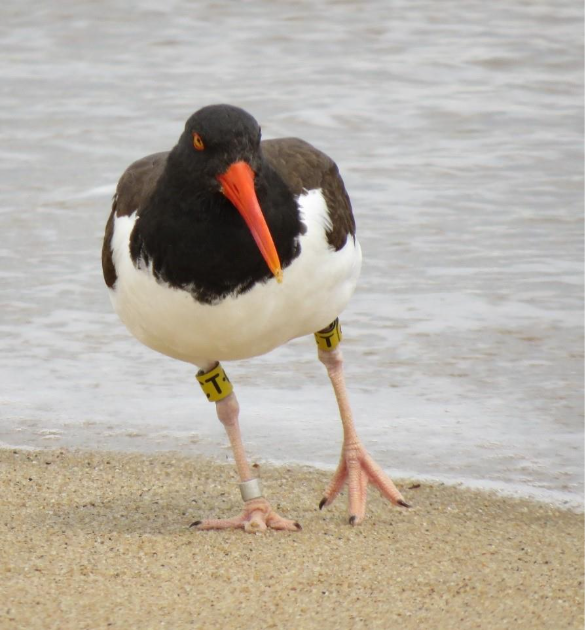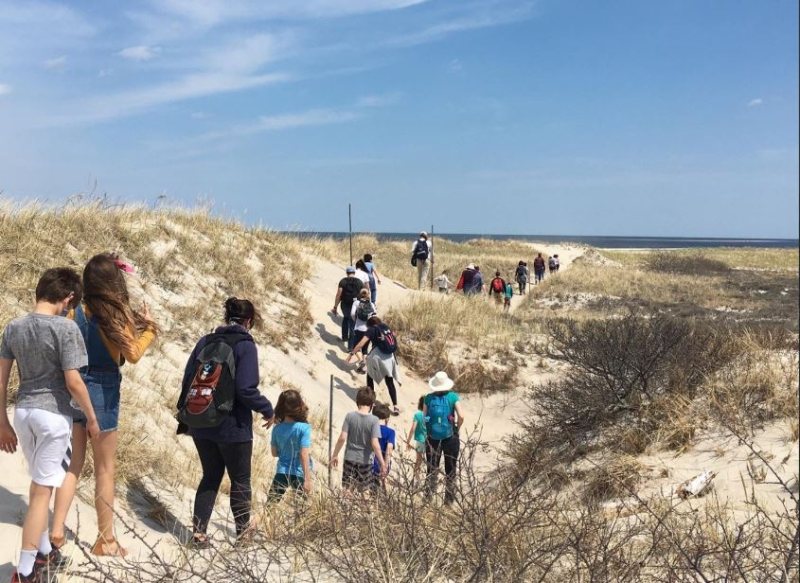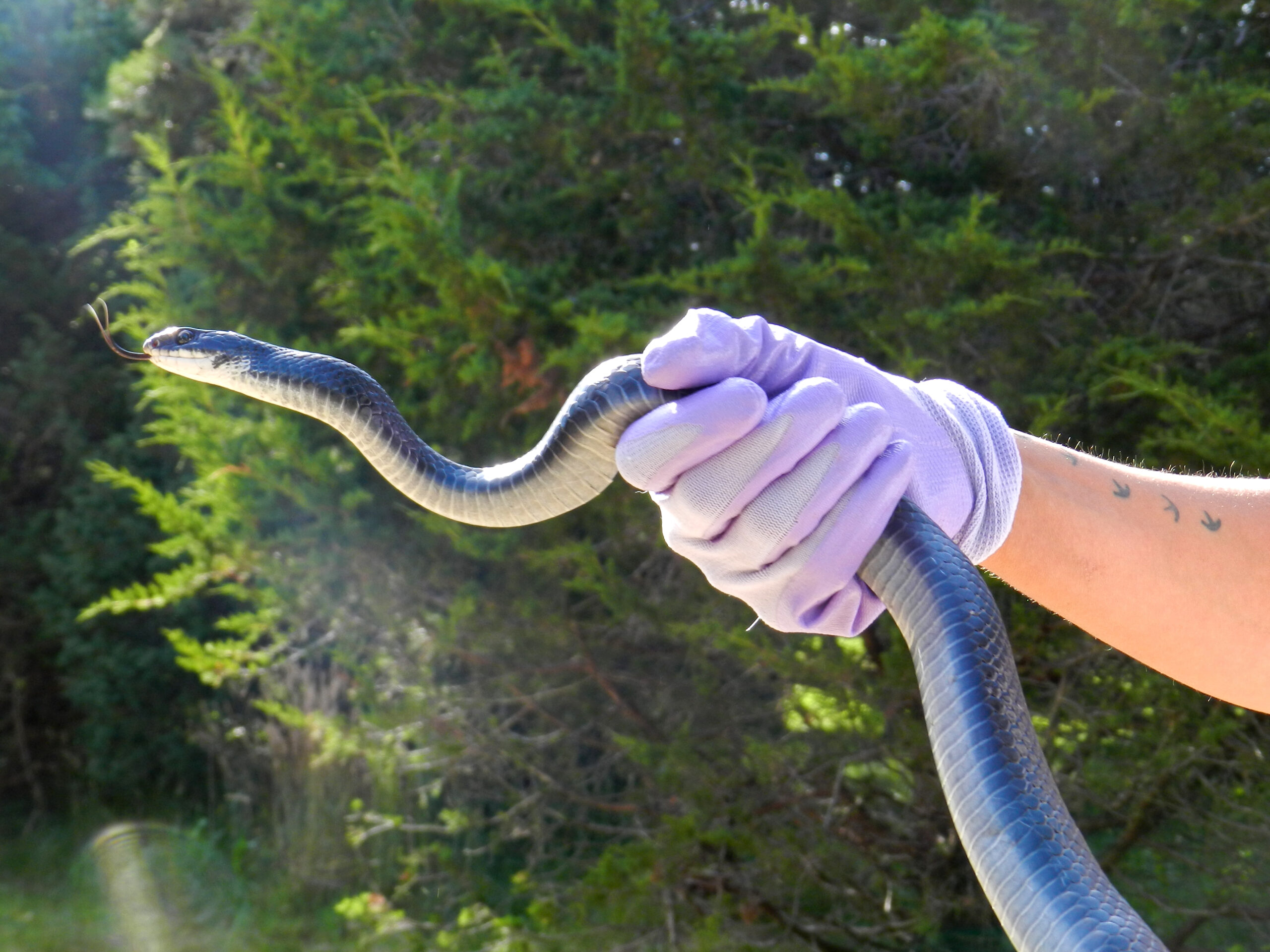
While they are ranked as “Common” by the Massachusetts State Wildlife Action Plan (SWAP), they are listed as a priority species given their disappearance across the state – and their decline is no exception on the Vineyard.
BiodiversityWorks, a local wildlife conservation organization on the Island, has been determined to bring back the black racer snake population, and is working tirelessly to do so. Dating back to 2014, they have committed themselves to monitoring local racer populations and creating habitat solutions to coax back the species that serves such a critical role in the ecosystems they are a part of.
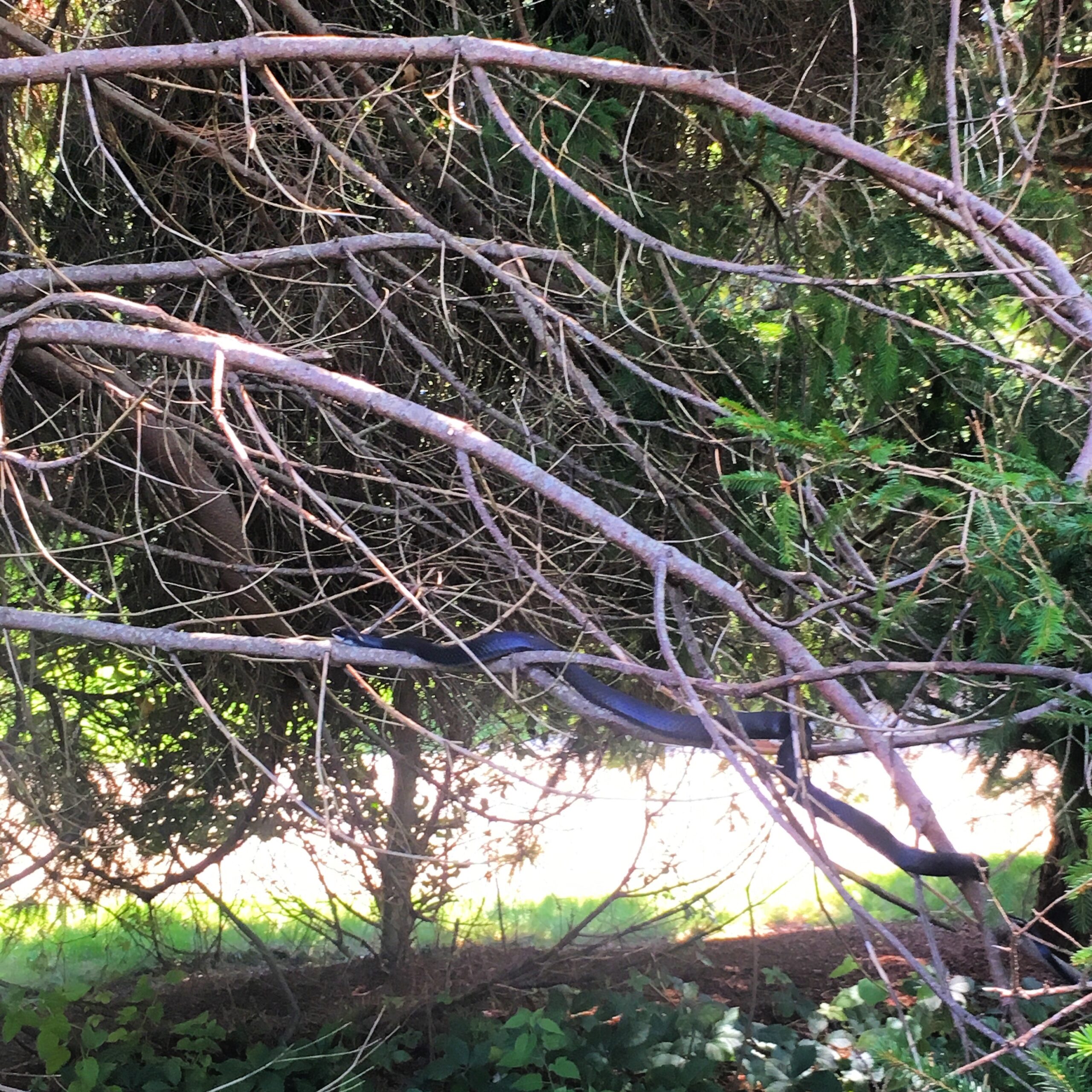
“We began by reaching out to the community. Where do people see racers? Where did they see them historically? That led to the next step of developing a map and discovering that now they are found mostly on the south shore of the Island, not quite where they used to be,” explained Liz Olson, Assistant Director and Wildlife Biologist at BiodiversityWorks.
This year, BiodiversityWorks received a MassWildlife Habitat Management Grant in partnership with The Trustees to protect and support black racers at Long Point Wildlife Refuge. As of last week, this pilot project completed construction of a new snake crossing under the summer road to the refuge and around 2000ft of drift fence leading to the crossing to encourage any snakes moving across the landscape to use this under road crossing. Two hibernacula (small underground areas snakes use especially in winter) were also completed.
“Once we had a baseline of where the snakes were being found on the Island, we asked ourselves what kind of landscape are they moving through? How are they moving through the Island’s changing landscapes?” explained Liz. “I think the first surprise for me was that the Racers make these big movements between their summer and winter ranges, and in the process, they are potentially crossing roads. We also saw the importance of having a natural landscape in your backyard versus a lawn. Having a natural landscape or grasses and shrubs allowed the snakes to move across the landscape undetected by predators and created a natural link between their habitats and resource needs.”
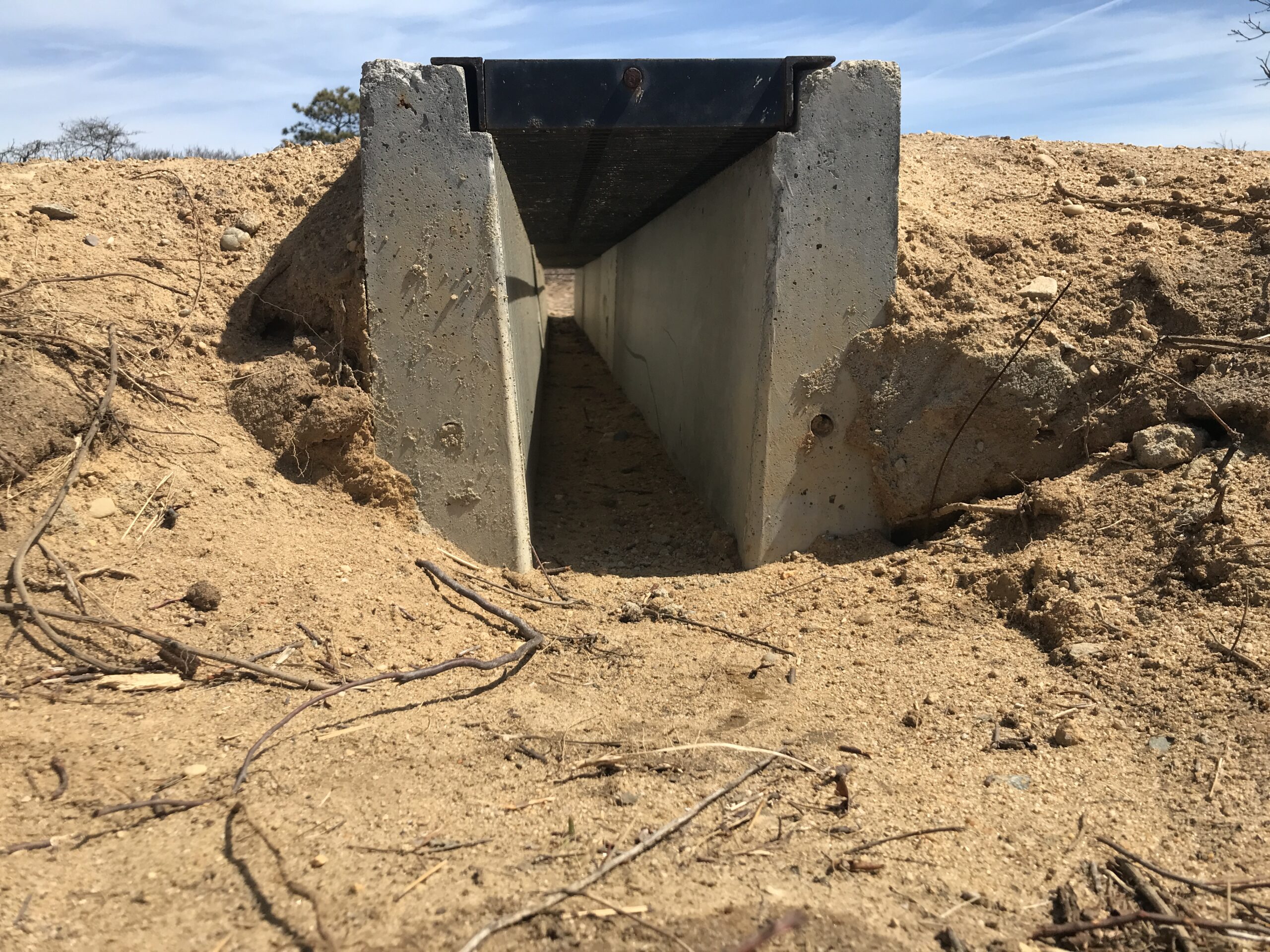
The snake crossing while under construction, at Long Point Wildlife Refuge
From this understanding, and the monitoring of specific snakes, the idea to create the hibernacula and crossing was born. Black racers need plenty of room to roam. A single snake will utilize hundreds of acres as home territory.
A few years ago, BiodiversityWorks tagged and tracked a snake, Audrey, at Long Point Wildlife Refuge. One of the new hibernacula that was recently constructed is in an area she treated as a home base during summer months. Audrey unfortunately was run over on the winter road to Long Point, and sadly that is not an uncommon story across the Island. Losing mature, breeding females to road mortality is a leading threat to the populations on Martha’s Vineyard.
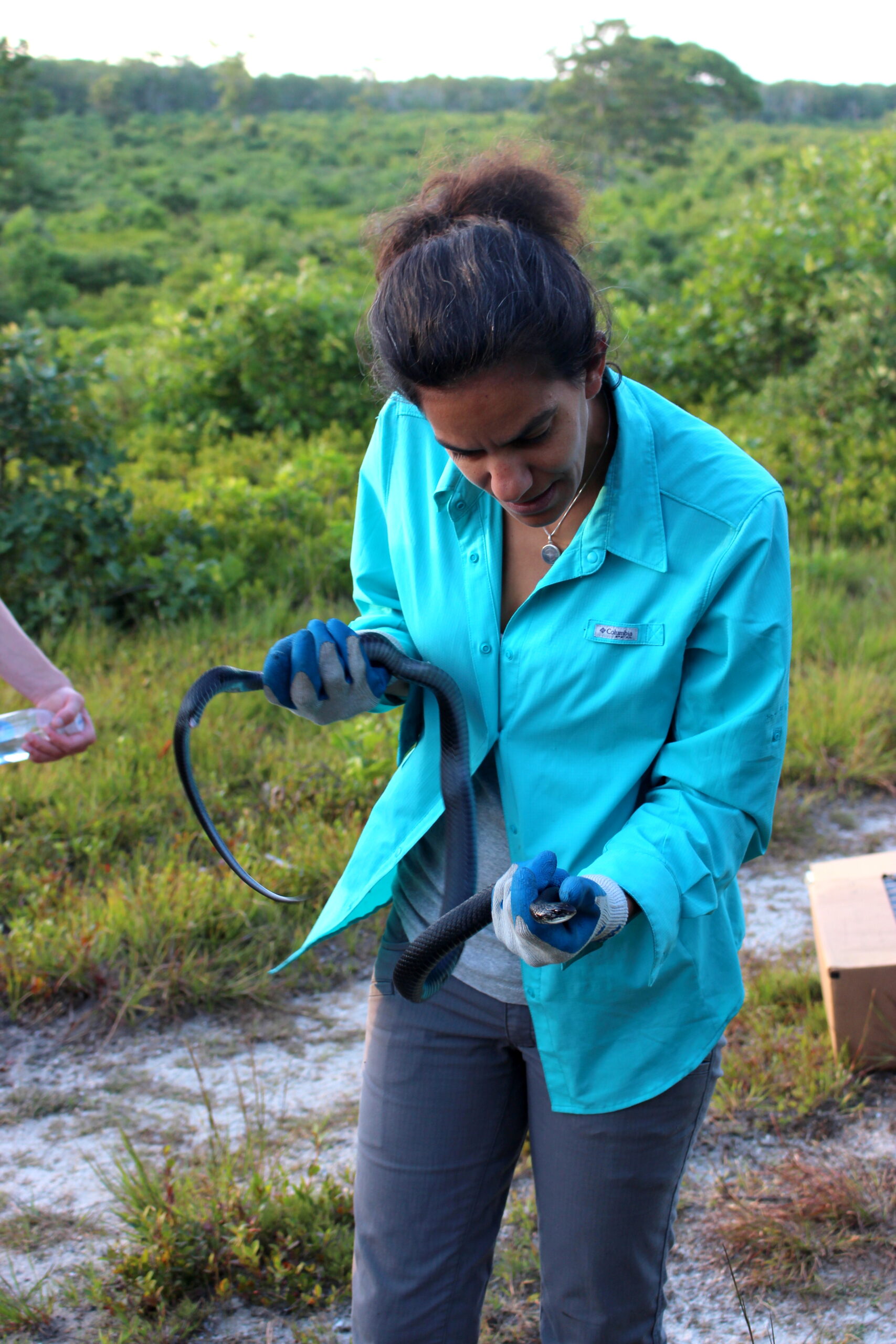
Liz with Audrey, the black racer snake
“That was really an eye-opening moment, where I thought, ‘Wow even these racers in a wildlife refuge are not safe,’ you know?” said Liz. “There’s just one dirt road, and she got run over. She crossed the road a few times to go down towards Thumb Point, likely to lay eggs, but we asked ourselves, if she had everything she needed in a smaller area would she travel less? Maybe. That is part of the understanding we want to gain through this monitoring.”
After completing these recent projects, the team has set up wildlife cameras to capture usage of the two new hibernacula and the snake crossing installed on the road out to the summer parking lot at Long Point. “Imagine, if this does work here at Long Point, what that could mean for the rest of the Island and our wildlife,” Liz remarked. “While it is a lot easier to install and get permits on the refuge, there’s potential to work with our great partners, team up, and try to bring it to the next level. The potential for progression is exciting, especially the idea that in the future we may be able to use these solutions in places where all sorts of wildlife get run over.”
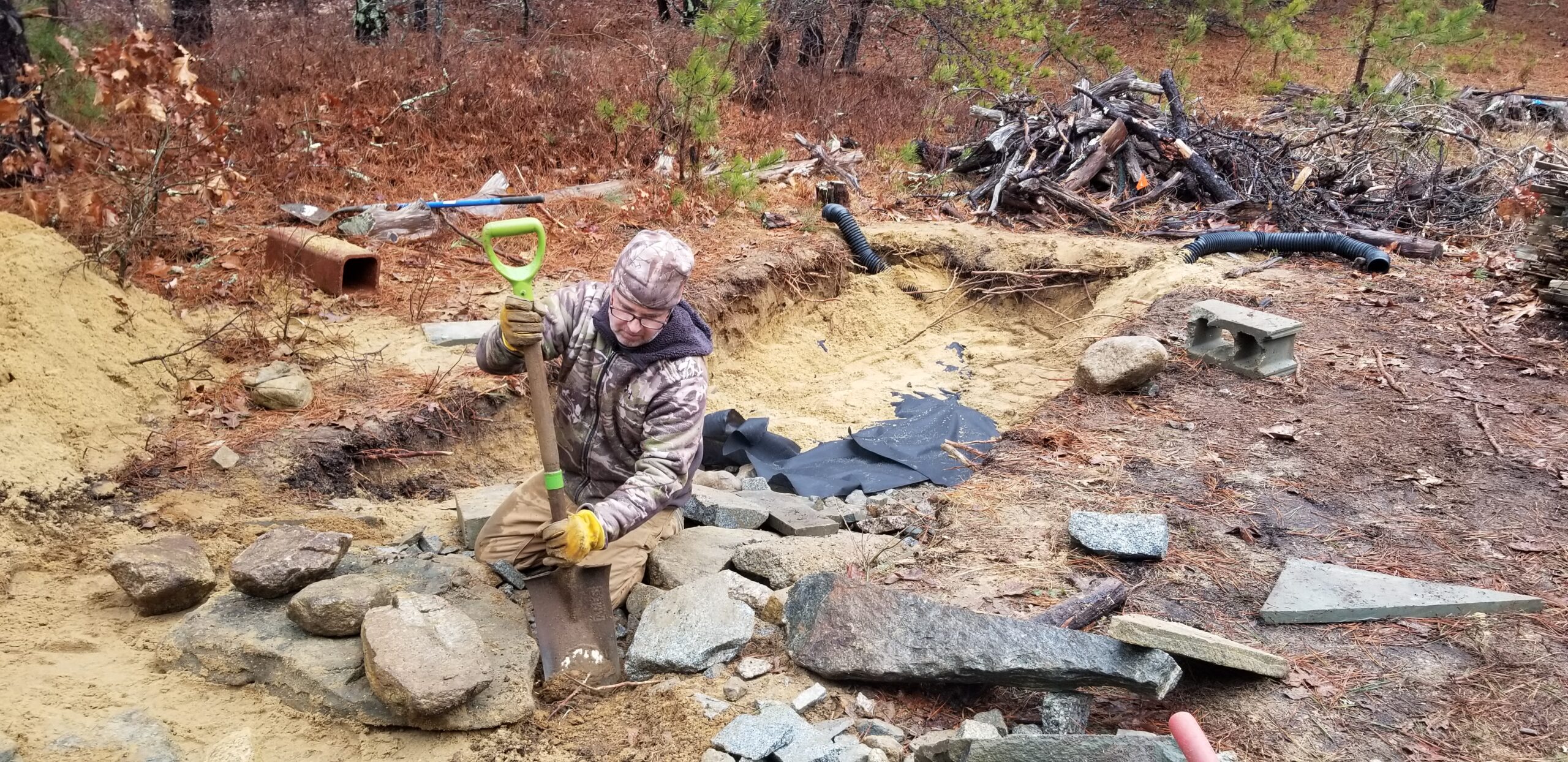
Construction of one of the hibernacula at Long Point Wildlife Refuge
Bringing back the racers will lead to a more balanced ecosystem. One of the racers’ main sources of prey is the white-footed mouse, a common carrier of tick-borne illness. With tick populations on the rise, limiting potential illness passed on from the insects is top of mind for many Islanders. “It’s a good sort of reminder that these large snakes that you may be scared of, are non-venomous, harmless, and are providing a highly beneficial service to us.”
Time will tell if the snakes utilize the hibernacula and snake crossing on the refuge. But this work is the next in a long line of steps taken to help preserve these habitats that serve such a critical purpose for wildlife. “I think it’s just really nice to do these collaborative projects,” said Liz. “These things can’t happen without teamwork.”
To hear more about the work being done at Long Point Wildlife Refuge, check out this blog on recent prescribed burns.

